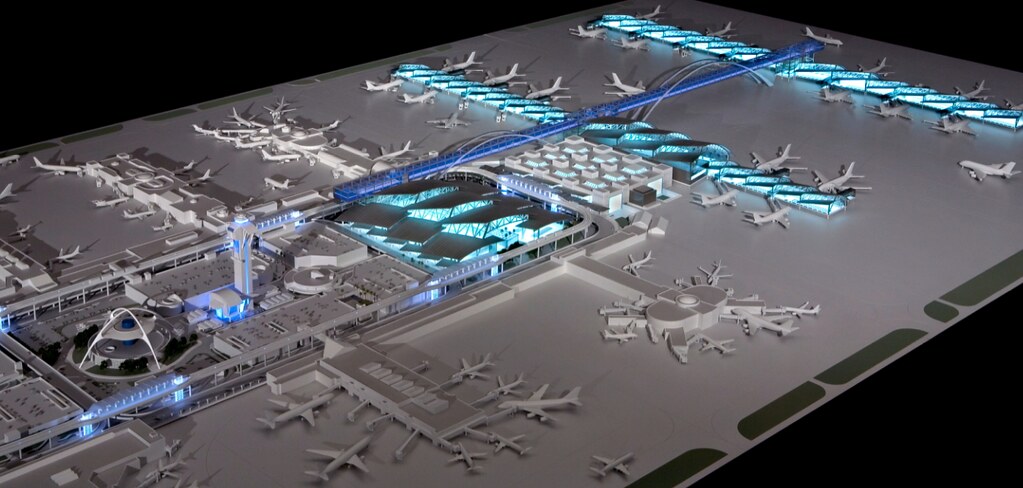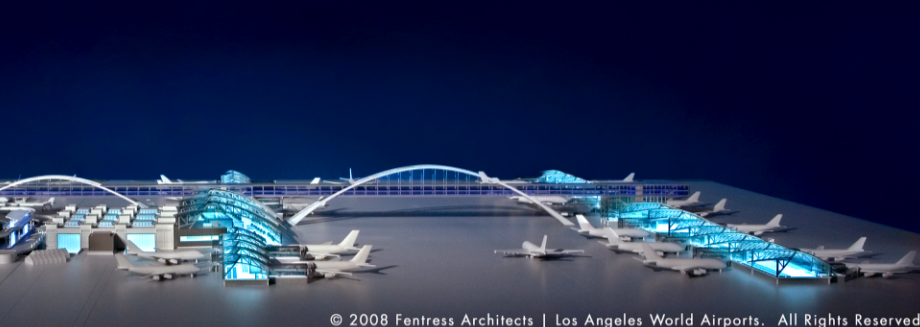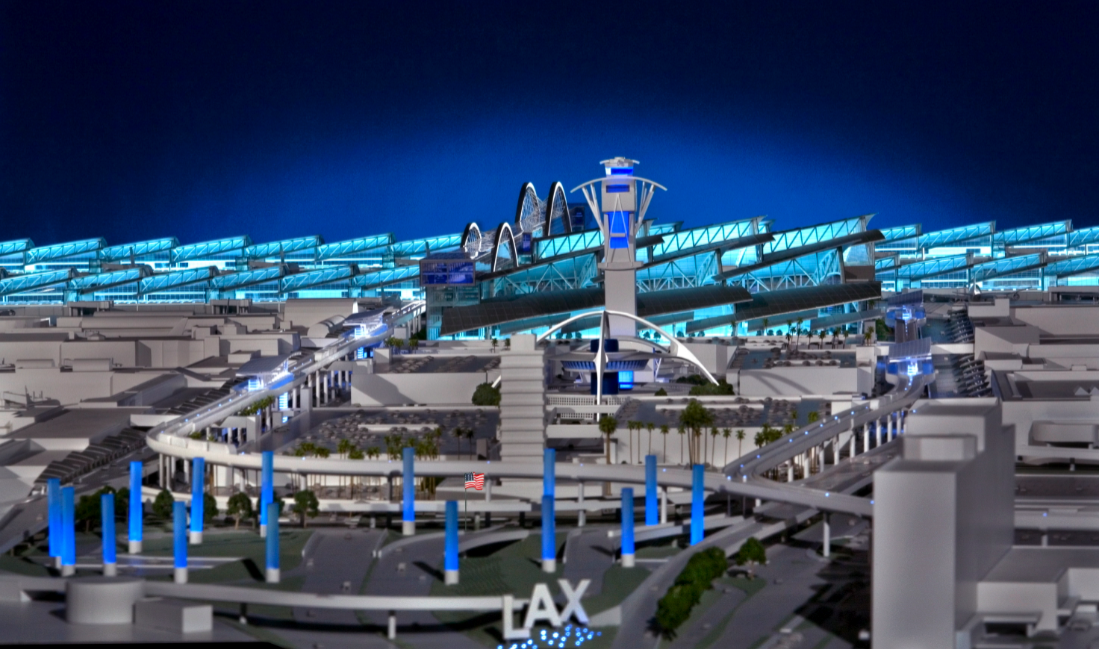Mayor Antonio Villaraigosa Unveils Modernization Plan for LAX
The plan, which could cost $5 billion to $6 billion, focuses on rebuilding the Tom Bradley International Terminal.
By Dan Weikel
November 18, 2008
For the third time in less than a decade, a Los Angeles mayor and airport leaders on Monday unveiled a grand architectural plan for the expansion and modernization of Los Angeles International Airport, which has not been significantly remodeled since 1984.
City officials say the projects, which include a major face-lift for the Tom Bradley International Terminal, are needed to enhance the travel experience for passengers and preserve one of the region's main economic engines.
"Today marks a milestone in our effort to modernize the hub of the region's air transportation system and restore it to the premier international gateway the airlines need and the City of Angels deserves," Mayor Antonio Villaraigosa said.
The plan's architectural models and renderings were unveiled during a ceremony at the airport's Flight Path Learning Center attended by airline executives, elected officials and business leaders.
The conceptual plans were designed by Fentress Associates, a Denver-based architectural firm perhaps best known in this country for its work on the national museum of the U.S. Marine Corps in Quantico, Va., and Denver International Airport, which has a peaked roof that evokes the image of the Rocky Mountains.
Using the region's natural landscape as inspiration, Curt Fentress said, the concepts for LAX capture the city's sense of place. The sloping roof lines of the glass-and-steel terminals, for example, are evocative of breaking waves at the beach.
"We want to change LAX into L.A. wow," Fentress said.
Highlighted on Monday were conceptual plans for the Bradley terminal, a cross-field taxiway, a midfield concourse for domestic and international flights and a passenger processing facility immediately across from the Bradley.
According to the dramatic renderings, the Bradley and midfield concourse will be linked by a soaring sky bridge over the cross-field taxiway, giving passengers panoramic views of the ocean, mountains and city skyline.
Airport officials say they expect to finish the projects by 2013 at a cost of $5 billion to $6 billion, though that could go substantially higher.
The centerpiece of the modernization and its priority is the overhaul of the Bradley, including the reconstruction of two concourses, new gates on the west to accommodate large commercial aircraft (such as the Airbus A-380) and a central hall offering shopping, restaurants and lounges.
Gina Marie Lindsey, director of Los Angeles World Airports, estimated that the taxiway and Bradley improvements will cost roughly $2 billion, though she acknowledged they could go higher depending on the final design. Some estimates have been as high as $4 billion.
Lindsey said the gates on the north side of the Bradley terminal should be finished by January 2012, while those on the south side should be completed by September of that year.
"We are one step closer to making L.A. the home of a world-class international airport," said Los Angeles Councilwoman Janice Hahn. "We haven't done anything at this airport since 1984."
The modernization plan does face substantial hurdles, including declining passenger volumes. Airlines, which have been dramatically cutting service, are increasingly concerned about airports' raising their fees to help finance improvements. The nation's credit crisis also has made it difficult for major airports to pay for new terminals and runways.
In the most recent example, Hartsfield-Jackson Atlanta International Airport has been unable to sell $600 million in municipal bonds for a new terminal. At LAX, the number of passengers is projected to fall below 55 million next year, down at least 13 million since 2000.
Lindsey said the airport will finance the modernization with higher landing fees, bonds, revenue from airport concessions and seed money from a portion of $850 million in bonds sold by LAWA earlier this year.
She said she was confident LAWA can afford the projects.
But Frank Clark, executive director of LAXTEC, an organization that represents international airlines at LAX, said the projects need to be cost-effective and that LAWA must settle its protracted dispute with the airlines over rental rates.
"It's a good vision. You just can't have a substandard experience as a passenger," Clark said of the conceptual plans. "But we remain concerned about costs."
Assuming the Bradley improvements run $2 billion, the cost for each of the 12 new gates is about $167 million, high for gate construction today, according to consultants.
The last major remodeling of LAX occurred just before L.A. hosted the 1984 Summer Olympics. The Bradley terminal was built along with an elevated roadway to serve departing passengers. Over the years, passengers have given low ratings to the facility in consumer surveys.
The first major renovation and modernization plan was proposed during Mayor Richard Riordan's administration. Plans revealed in 2000 called for accommodating up to 100 million passengers a year.
Four years later, Mayor James K. Hahn unveiled an $11-billion plan that included a ground transportation center outside the airport boundaries and a tram system to get travelers to and from the airport. Lawsuits and opposition from elected officials and community activists stalled both plans.
--------------------------------------------------------------------------------------












